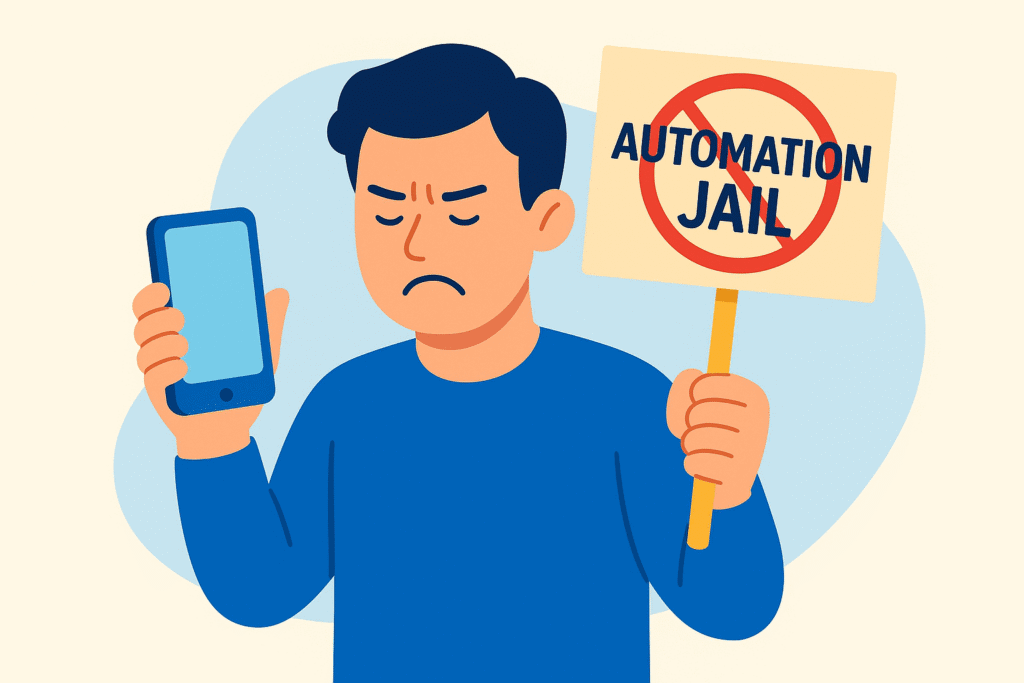Is AI Fulfilling Its Promise in the Contact Center?
That depends on what you think the “promise” was.
For some, the promise of AI in the contact center meant eliminating agents and automating nearly every customer interaction. If that’s the expectation, then yes—AI will fall short. Gartner even predicts that by 2026, 50% of organizations will abandon efforts to replace human agents with AI in customer service.
But here’s the controversial take: AI is not only fulfilling its promise—it’s exceeding it. Just not in the way many first imagined.
The Problem with the Goal of Full Automation

For decades, companies tried to use IVRs and more recently bots to keep customers away from live agents. While that approach reduced costs, it often came at the expense of customer satisfaction. Trapping customers in a closed-loop automated process creates frustration, especially when escalation paths are unclear.
Research shows that while customers are open to self-service when it’s effective, the majority still prefer having a fast, seamless way to reach a human agent when needed [Source: Metrigy Customer Experience Optimization 2024-2025 – Customer Views].
Automation is valuable, but not when it replaces human empathy.
Where AI Really Delivers in Contact Centers
AI’s biggest value isn’t in replacing agents. It’s in empowering them and elevating the customer experience. Companies that get this right are seeing long-term gains in customer loyalty, employee engagement, and revenue growth.
Here’s how:
1. Smarter Front-End Experiences
AI can provide a more intuitive, conversational self-service layer compared to legacy IVRs. Customers can resolve simple issues quickly—or be routed to a live agent without friction.
2. Faster, More Personalized Routing
Instead of starting from scratch, agents receive context—customer history, sentiment, and reason for contact—before they pick up the interaction. That means less repetition for the customer and faster resolution.
3. Agent Assist and Real-Time Guidance
AI can coach agents in the moment: surfacing knowledge articles, suggesting next best actions, or even analyzing tone and language to help agents demonstrate empathy and active listening. This not only improves CX but also makes the agent’s job easier and more rewarding.
4. Continuous Learning and Improvement
Unlike static IVRs, AI learns from every interaction, improving over time and helping the entire organization adapt to changing customer needs.
The Business Impact
The outcomes speak for themselves:
- Higher First Contact Resolution (FCR): Problems are solved faster, on the first try.
- Reduced Handle Times: AI speeds up workflows without sacrificing quality.
- Happier Agents: Better tools and less frustration mean lower turnover—a major cost driver in contact centers.
- Better Customer Experiences: Positive interactions drive loyalty, upsell opportunities, and word-of-mouth referrals.
Yes, this may ultimately reduce the number of agents needed. But those who remain will be more skilled, more engaged, and more effective at strengthening customer relationships.

Bottom Line
The promise of AI in the contact center was never about eliminating humans. It’s about making human connections better. Organizations that embrace AI as a partner to both customers and agents—not as a replacement—are already seeing the benefits.
AI is fulfilling its promise. Just not in the way some first imagined.

